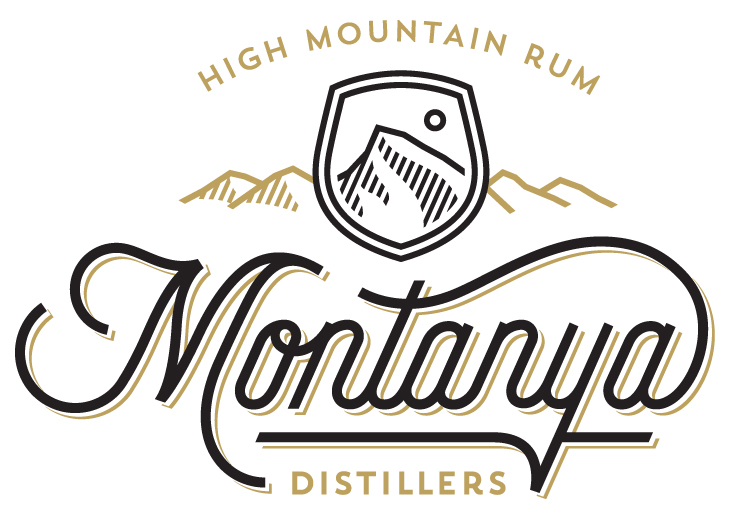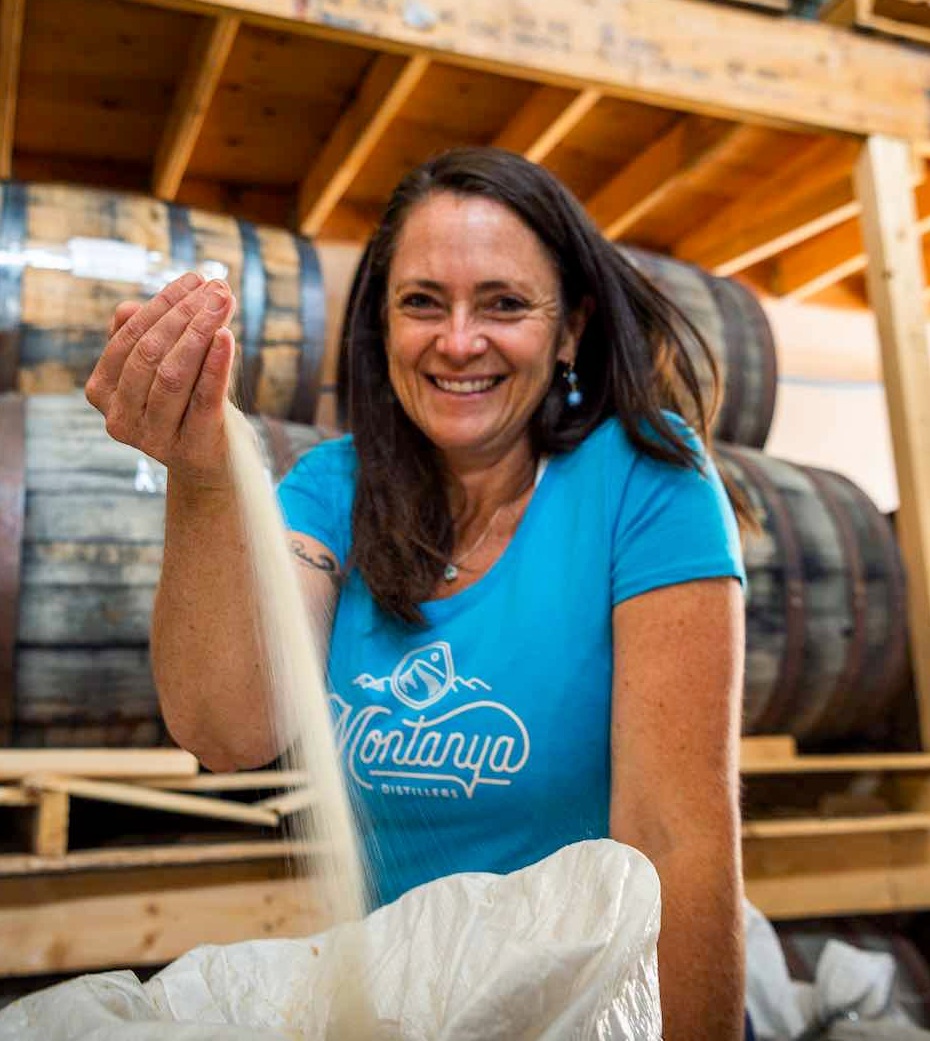The Secrets of Sugar Cane
At a recent staff get-together, we reviewed what makes Montanya Distillers rum unique (we were gearing up for a pretty big season and wanted to make sure everyone felt comfortable fielding questions). Our chef asked a cheeky question that got a lot of laughs but was pretty on point: What about the rum plant?
If you’re familiar with rum, then you know there’s no plant we call the rum plant, just like there’s no plant we call the vodka plant or the whiskey plant. But rum does always come from a single plant—sugar cane—and as our chef was pointing out, people want to know where it comes from, how it’s grown, and what it does for the rum. Also, does coming from sugar cane make the rum sugary sweet?
So in the spirit of celebrating “the Rum Plant,” here are a few things to know about sugar cane and rum:
Rum is Not Inherently Sweet
Founder and owner Karen Hoskin with the raw cane sugar that goes into Montanya rum.
Rum may be made from sugar cane, but that doesn’t make it sugary or sweet. All that sugar cane is consumed by yeast during the distillation process, so that rum is primarily made up of water and alcohol. In fact, when rum comes out of the still, it has no sugar and no carbs (it’s also gluten-free).
That runs counter to what a lot of people think—how many times people have told us they don’t drink rum because it’s too sweet! The truth is that any sweetness in rum comes from one of two sources: naturally from the barrel (chemical compounds in the wood like vanillans and sucrose can create sweetness), or unnaturally from additives like sugar or corn syrup.
The use of sweeteners is actually a big debate within the world of rum right now, with people lining up for and against. At Montanya Distillers, we’ve never used sugar in our rums and don’t plan to (our rum has four basic ingredients) because that’s the kind of rum we prefer to drink. We add a tiny bit of caramelized local honey to our rums (less than .04% of any bottle), which some people may perceive as a sweetener, but this is not the case for us. We love the acidity the honey contributes to the finish of the rum, and the way it brings out the natural flavors of the barrel and the sugar cane. It is part of what makes our rum totally unique. (And although this is a somewhat non-traditional method in the world of rum, it has been used in the Canary Islands and Morocco).
Why We Don’t Make Sweet or Flavored Rums
Our founder Karen Hoskin fell in love with rum in India, where she tried an aged rum for the first time. From the beginning, she’s preferred to drink rums that are less sweet by nature. That makes her palate more closely aligned with European preferences, and has probably helped Montanya Distillers stand out in America and overseas.
We also get asked why we don’t make flavored or spiced rums. Getting flavors to stick requires artificial and natural flavorings, which aren’t actually “natural” at all. Using real spices can leave the rum tasting bitter or cause changes to flavors in the bottle over time. The flavors will dissipate quickly after being bottled. In fact, one of the best ways to stabilize the added flavors is to bottle a spirit at high proof (or to add Propylene Glycol—ew!) As much as we love rum, we can’t help but think that it has a lot of alcohol in it already (80 proof); we haven’t yet reconciled ourselves to making higher proofs (although we may, not just to stabilize flavor but to also try something different). For now, we’re sticking with our tradition and making rum the way we have come to know and love.
The Difference Between the Sugar We Use to Make Rum and Your Sugar at Home
Montanya Distillers rum is made with raw cane sugar and molasses. We filter our rums through a coconut husk carbon filter before bottling to purify the rum and the taste.
The sugar cane plant gets pressed into sugar cane juice, which contains molasses and raw sugar cane (which can be refined into table sugar). This pressing process removed a fiber called bagasse (were we speaking in person, you’d be forgiven for hearing bad-a$$!) which is the fibrous solids of the cane plant. When you take a stalk of sugar cane and run it through the mill (presses and boilers), it gets cooked down into syrup, crystalized under vacuum pressure and placed in a centrifuge. The spinning process separates the raw molasses from the raw sugar crystals.
Many rum producers only use the molasses. We use it all: what was in the original plant, minus the bagasse and the water—88% raw sugar and 12% molasses. The sugar most people use at home goes through four to six more layers of chemical processing (flocculants), so that it’s uniform in shape, size, and color and doesn’t have imperfections. The raw sugar we use is majorly unrefined and still has bits of bagasse in it—as well as many more flavors that are ultimately good for the rum. (And, we think, good for coffee, since the owners use it at home too, bagasse and all. So much natural flavor that table sugar doesn’t have!)
What’s cool about our sugar mill is that it’s single estate (though our rum is not): all the sugar cane is grown and processed in the same 50 square mile region of Louisiana.
You might also like these blog posts from Montanya Distillers:
Learn about Montanya rums and get our tips on tasting rum (including hosting your own rum tasting) with this post on Montanya rums.
We know our sugar cane growers personally—and introduce you to one of them in this blog post.




